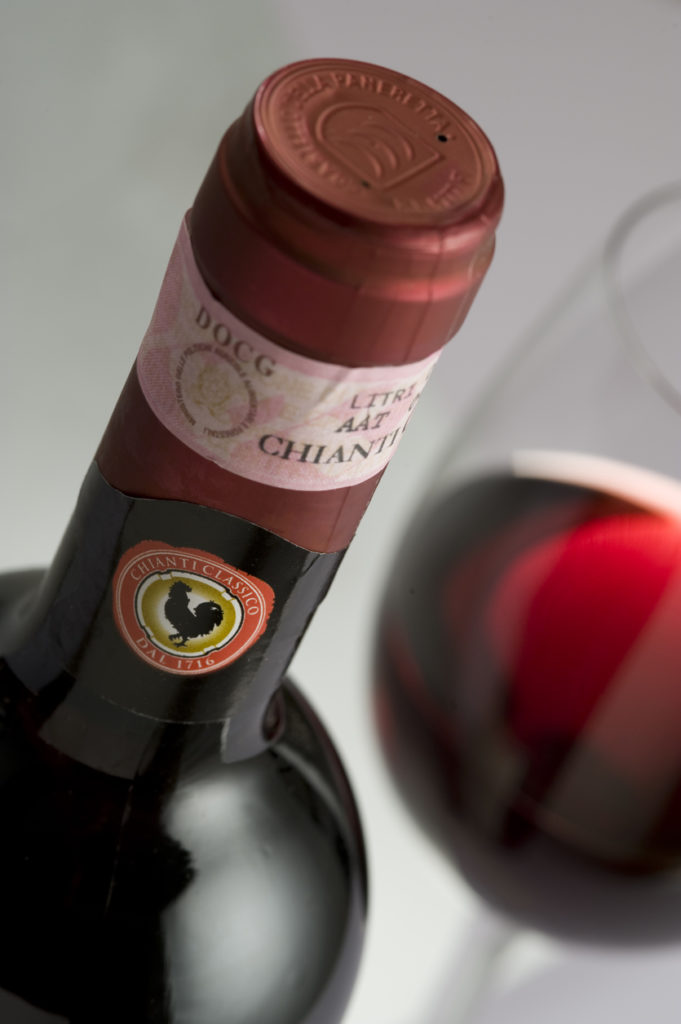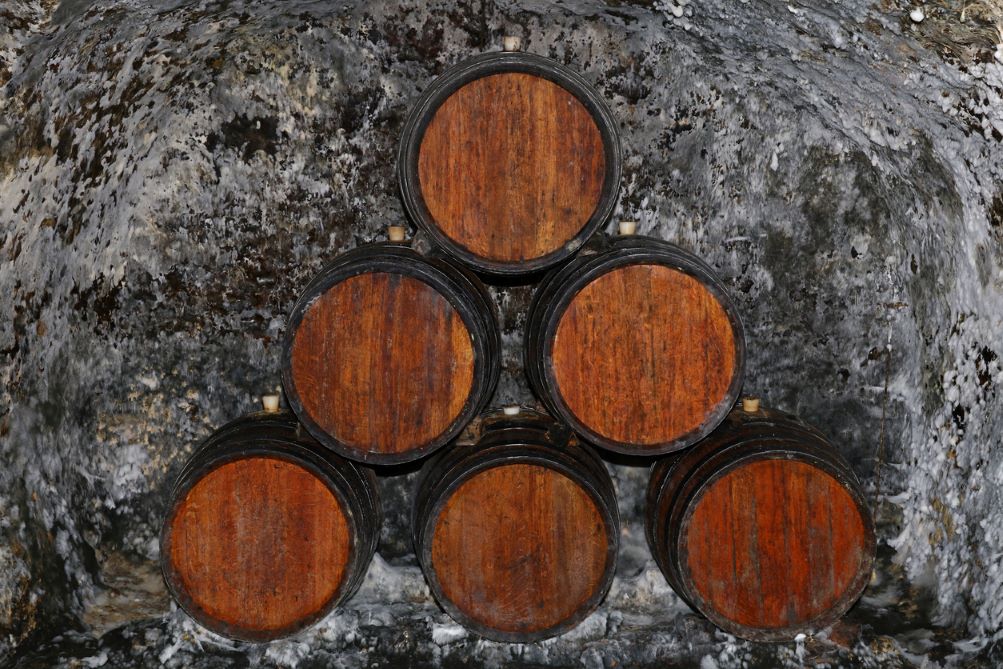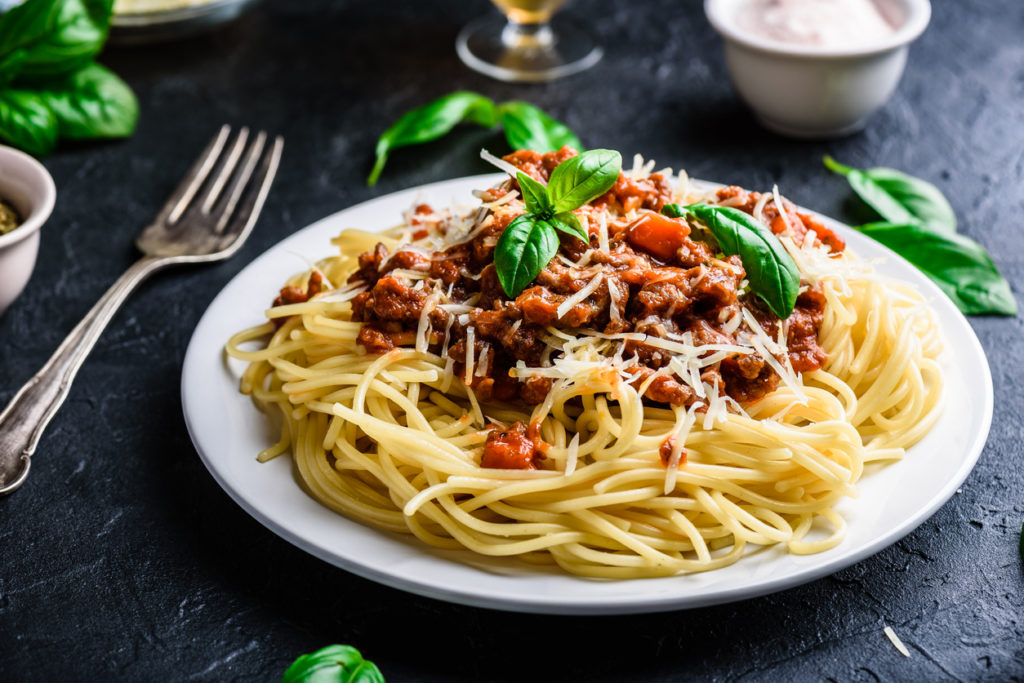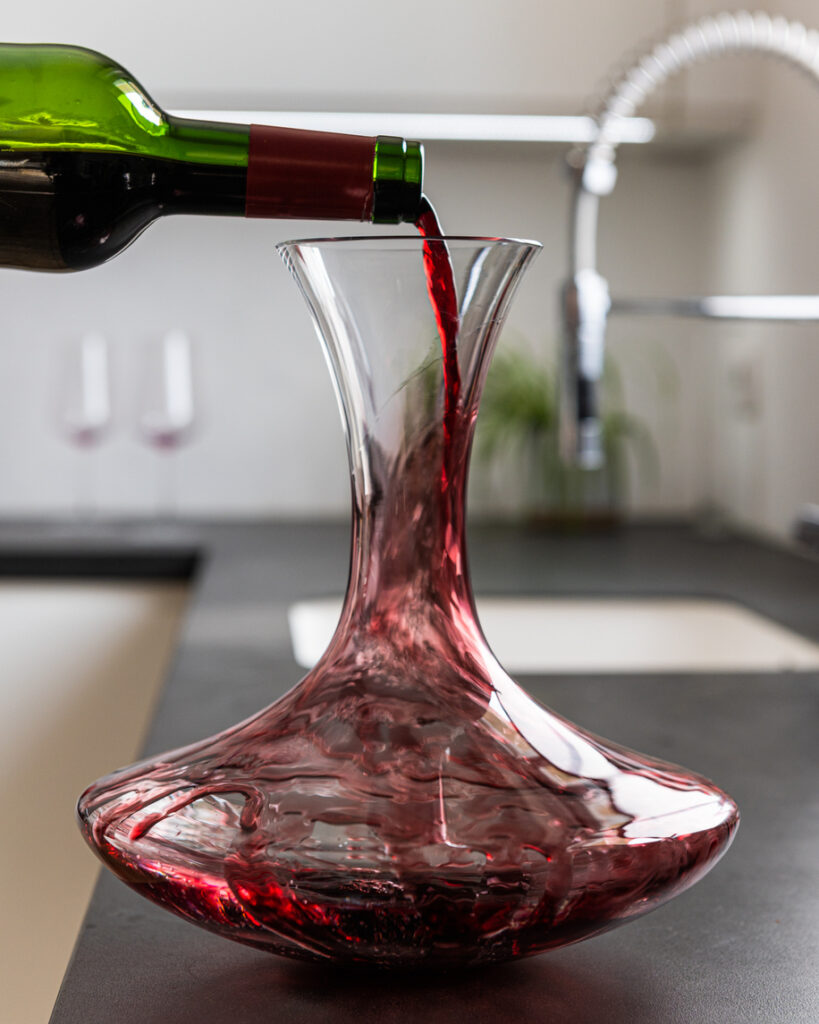In the world of wine, there are battles that rage on for eternity. Cabernet Sauvignon versus Merlot, Chardonnay versus Sauvignon Blanc. But today, we delve into a clash of titans that has captured the hearts and palates of wine enthusiasts around the globe – Chianti versus Pinot Noir.
These two iconic red wines have stood the test of time, each with their own distinct characteristics and loyal followings. So buckle up, grab a glass of your favorite vino, and let’s embark on a journey through the vineyards to uncover what sets these two noble varietals apart.

Understanding Chianti wines
Chianti wines have long been known as the pride of Tuscany, a region in central Italy celebrated for its picturesque landscapes and exceptional culinary offerings. The vibrant red wines produced here are made predominantly from Sangiovese grapes, which lend them their characteristic fruity and delicate floral aromas. What sets Chianti wines apart is their versatility, making them a perfect choice for both casual gatherings and special occasions.

Sustainability and Organic Farming
Over the years, winemakers in the region have worked tirelessly to refine the production techniques used in crafting these wines. The result is a progression from traditional Chianti to Chianti Classico, which boasts enhanced quality and flavor profiles while still staying grounded in tradition.

With an emphasis on sustainability and organic farming methods gaining popularity among producers, Chiantis are now being created with even greater respect for nature’s balance. These developments have not only elevated the overall calibre of Chianti wines but also widened their appeal to wine lovers worldwide.
Evolution of Chianti wine
The notable evolution of Chianti is further illustrated through its labeling system. While once limited by restrictive regulations requiring specific proportions of grape varieties, modern-day Chiantis now offer more flexibility for grape blending options, allowing winemakers to showcase their creativity while still maintaining the wine’s fundamental character.

Furthermore, the introduction of single vineyard bottlings has highlighted the terroir-driven variations that exist within this renowned wine region. From sensorial experiences to historical significance, exploring all aspects of Chianti wines is an adventure well worth undertaking for
Difference between Chianti and Chianti Classico
Chianti and Chianti Classico are two Italian red wines that share a common origin but have distinct characteristics. While both wines come from the region of Tuscany, Chianti is made from a blend of grapes grown in various parts of the province, while Chianti Classico is made exclusively from grapes grown in the original territory of Chianti. This distinction can significantly impact the flavor profile and overall quality of the wine.

Chianti Classico boasts a more refined and structured taste compared to its counterpart, with flavors that tend to be deeper and more complex. This is due to several factors, including stricter regulations on grape varieties used and aging requirements. On the other hand, Chianti often exhibits a lighter body and fruitier notes since it can include grapes sourced from outside traditional Chianti vineyards.

To truly appreciate the differences between these two wines, one must delve into their respective production methods as well. Despite their shared grape varieties like Sangiovese, both undergo varying degrees of vinification processes that influence their final character. For example, while aged for at least 12 months in oak barrels or barrique for an extra year if labeled riserva, Chiantis are typically released after just 6-9 months of aging. In contrast, producers must age Chianti Classicos for at least 24 months (with 12 months minimum resting in wooden casks) before release.
Understanding Pinot Noir
Pinot Noir wines are often regarded as some of the most complex and ethereal wines in the world. With their delicate yet powerful structure, they offer a unique experience that sets them apart from other red wines. One of Pinot Noir’s defining characteristics is its light color, which ranges from pale ruby to translucent garnet. This lighter hue allows for greater transparency, revealing the wine’s subtle nuances and intricate layers.

Pinot Noir flavor profile
In terms of flavor profile, Pinot Noir showcases a harmonious balance between fruitiness and earthiness. It typically boasts notes of cherry, raspberry, and strawberry, accompanied by hints of mushroom, truffle, and forest floor. This combination creates a sensory journey in every sip – from the initial burst of luscious fruit to the lingering savory finish.

Expression of Terroir
Another aspect that contributes to Pinot Noir’s allure is its ability to reflect terroir more than any other grape variety. Due to its thin skin and sensitivity to climate conditions, it absorbs flavors from the soil it grows in with remarkable precision. Whether it’s Burgundy’s limestone-rich vineyards or California’s cool coastal regions, each bottle expresses a sense of place that tells a story through its unique personality.
Oak ageing of Chianti classico vs Pinot Noir
Chianti and Pinot Noir, two beloved red wine varieties from Italy and France respectively, have distinct characteristics that contribute to their unique flavor profiles. One aspect that sets these wines apart is the aging process, particularly in relation to oak barrels.

Are oak barrels used for Chianti?
Chianti Classico, traditionally produced in Tuscany, Italy, is usually aged in large Slovenian or French oak casks for a minimum of 7 months. The use of oak barrels imparts subtle flavors of vanilla and spice into the wine, enhancing its complexity without overpowering its natural fruitiness.
Pinot Noir and oak ageing
On the other hand, Pinot Noir has a more delicate nature that requires careful handling during the aging process. While some producers may choose to age their Pinot Noir in oak barrels for added structure and depth, many opt for minimal oak influence to preserve the grape’s inherent elegance.
Instead of using new oak barrels as with other red wines such as Cabernet Sauvignon or Merlot, Pinot Noir often undergoes aging in older or neutral oak vessels to allow the fruit-driven flavors and nuances of terroir shine through.

Difference in oak ageing Chianti vs Pinot Noir
By understanding how Chianti and Pinot Noir differ in terms of their use of oak barrels during the aging process, wine enthusiasts can gain a deeper appreciation for each varietal’s unique characteristics. Whether it is Chianti’s harmonious blend of traditional practices and modern techniques or Pinot Noir’s emphasis on showcasing its pure expression of terroir, these two wines demonstrate that even slight variations in production methods can result
The Differences in Characteristics Between Chianti vs Pinot Noir
Pinot Noir and Chianti, two renowned wines with distinct characteristics that set them apart from each other. While Pinot Noir typically hails from cool-climate regions like Burgundy, Chianti is produced in the warm climate of Tuscany, Italy. This contrast in terroir impacts the flavor profiles of both wines.

Pinot Noir displays delicate aromas and flavors of mostly red fruit notes, berries, cherries, and floral notes. Its lighter body and softer tannins make it an elegant choice for those seeking a more subtle wine experience. On the other hand, Chianti showcases bold flavors of dark fruits like blackberry and plum with hints of earthiness and dried herbs. It often possesses a robust structure with higher tannins that require some aging to reach its full potential.

While both wines are known for their food-friendly qualities, Pinot Noir pairs exceptionally well with dishes like roasted chicken or seared salmon due to its versatility and naturally high acidity. In contrast, Chianti’s fuller body allows it to stand up against heartier fare such hearty dishes such as grilled meats or hearty tomato-based pasta dishes.

In conclusion, contrasting terroirs lend distinctive characteristics to Pinot Noir and Chianti wines. Whether you prefer the delicacy of Pinot Noir or the boldness of Chianti depends on your personal taste preferences and what culinary delights you plan to indulge in alongside these exceptional wines. Explore each wine’s unique profile to discover which one captivates your palate most profoundly
Similarities of Pinot Noir vs chianti wine
Pinot Noir and Chianti, two renowned wines with distinct characteristics that set them apart from each other. While Pinot Noir typically hails from cool-climate regions like Burgundy, Chianti is produced in the warm climate of Tuscany, Italy. This contrast in terroir impacts the flavor profiles of both wines.

Flavors Pinot Noir vs Chianti wine
Pinot Noir displays delicate aromas and flavors of red berries, cherries, and floral notes. Its lighter body and softer tannins make it an elegant choice for those seeking a more subtle wine experience. On the other hand, Chianti showcases bold flavors of dark fruits like blackberry and plum with hints of earthiness and dried herbs. It often possesses a robust structure with higher tannins that require some aging to reach its full potential.
Food Pairing Pinot Noir vs Chianti
While both wines are known for their food-friendly qualities, Pinot Noir pairs exceptionally well with dishes like roasted chicken or seared salmon due to its versatility and naturally high acidity. In contrast, Chianti’s fuller body allows it to stand up against heartier fare such as grilled meats or hearty tomato-based pasta dishes.

In conclusion, contrasting terroirs lend distinctive characteristics to Pinot Noir and Chianti wines. Whether you prefer the delicacy of Pinot Noir or the boldness of Chianti depends on your personal taste preferences and what culinary delights you plan to indulge in alongside these exceptional wines. Explore each wine’s unique profile to discover which one captivates your palate most profoundly
Chianti Wine Classification: A Journey Through Italy’s Vineyards
When it comes to Italian wines, Chianti is often regarded as the crown jewel. This beloved wine region, located in the heart of Tuscany, offers a diverse range of flavors and styles that captivate wine enthusiasts around the world. One of the unique aspects of Chianti is its classification system, which not only ensures quality but also provides valuable insights into the tradition and heritage behind each bottle.
Black Rooster – Gallo Nero
At the center of Chianti’s classification system is the Gallo Nero (Black Rooster) symbol, which signifies wines that adhere to strict production regulations. The highest level of quality within this classification belongs to Chianti Classico. Made from Sangiovese grapes grown exclusively in the designated vineyard areas, these wines exude elegance with their complex layers intense flavors of dark cherry,, red fruit, and earthy undertones.

Super Tuscans
Moving beyond Chianti Classico lies another intriguing category known as Super Tuscans. These wines represent a break from tradition and embrace international grape varieties such as Cabernet Sauvignon and Merlot. Blending classic Tuscan grapes with these non-indigenous varietals has resulted in bold and powerful wines that have gained global recognition for their impressive depth and structure.
Which wine to Choose: Chianti vs Pinot noir
When it comes to choosing between Chianti and Pinot Noir, wine enthusiasts often find themselves at a crossroads. Both wines have their own distinct characteristics and appeal, making the decision challenging.

Flavor
Chianti, a red wine from Tuscany, Italy, is known for its bold flavors of cherry, plum, and spice. famous Italian reds pairs well with hearty Italian dishes like pasta and pizza. On the other hand, Pinot Noir is an elegant red wine from Burgundy region in France that offers a delicate balance of cherry, strawberry, and earthy notes. this Italian wine complements mild cheeses and roasted meats beautifully.
Lighter bodied red wine vs full bodied wine
One important factor to consider when deciding between Chianti and Pinot Noir is personal preference. If you enjoy wines with more pronounced flavors and a slightly fuller body, then Chianti might be the better choice for you. Its robustness can stand up to bolder flavors in food and can be enjoyed both on its own or as part of a meal. On the contrary, if you prefer wines that are lighter-bodied with subtle complexity and silky smoothness on the palate, then Pinot Noir could be your go-to option.

Food pairing chianti vs Pinot Noir
Chianti and Pinot Noir are two popular red wines with distinct characteristics and flavor profiles. When it comes to food pairing, both wines offer unique opportunities to elevate the dining experience. Chianti, versatile wine known for its boldness and robust flavors, pairs exceptionally well with dishes such as grilled meats, tomato-based pasta sauces, and aged cheeses and Italian food in general. The acidity in Chianti cuts through the richness of these foods, balancing the flavors on your palate and enhancing each bite.

On the other hand, Pinot Noir is celebrated for its delicate and elegant nature. This wine goes beautifully with dishes that have subtle yet complex flavors like roasted chicken with herbs, seared salmon, or mushroom risotto. The silky texture of Pinot Noir complements these dishes by providing a counterbalance to their earthy or savory components.
While both Chianti and Pinot Noir showcase their versatility when it comes to food pairing choices, they offer contrasting experiences that can appeal to different palates. Whether you prefer the intensity of Chianti or the gracefulness of Pinot Noir is truly a matter of personal preference — but one thing is certain: exploring different combinations will only enhance your culinary journey!
How to serve Chianti classico vs Pinot Noir
Serving Chianti and Pinot Noir is not simply a matter of pouring them into any old glass. The shape and size of the glass can greatly impact the tasting experience. For Chianti, a tall, narrow glass is recommended to help concentrate the aromas. This allows them to reach your nose more easily. On the other hand, Pinot Noir benefits from a wider bowl-shaped glass. This form helps to open up its delicate, complex flavors, and aromas.

Serving Temperarture
One often overlooked but crucial aspect of serving Chianti and Pinot Noir is the temperature at which they are enjoyed. While many may assume that red wine should always be served at room temperature, this isn’t necessarily the case. Chianti, with its vibrant acidity and fruity flavors, benefits from being slightly chilled. Aim for a serving temperature of around 16-18 degrees Celsius (60-64 degrees Fahrenheit) to allow the wine to showcase its crispness and refreshing qualities.

On the other hand, Pinot Noir thrives when served slightly warmer than most red wines. Its delicate structure and complex aromas truly shine when enjoyed at around 18-20 degrees Celsius (64-68 degrees Fahrenheit). It’s worth noting that too warm of a serving temperature can result in the alcohol overpowering the nuances of Pinot Noir. Thereofre it’s important not to go too far above this range.
Do you decant Chianti and Pinot Noir wines?
Decanting is another technique that can enhance the enjoyment of these wines. While it may not be necessary for every bottle, decanting can soften the tannins in both Chianti and Pinot Noir. This allows their flavors to mellow out and become more complex over time. It’s always worth considering decanting if you have a younger vintage. You can decant wines if you find that the wine is initially tight or closed upon opening. Always be careful with old wines. They only need limited contact with oxygen to fully develop their flavors.

By paying attention to the type of glass used, serving temperatures, and possibly even decanting, you can fully appreciate all dark fruit flavors that Chianti and Pinot Noir have to offer. These small but significant details will elevate your drinking
Which wine is sweeter – Chianti classico vs Pinot Noir
When it comes to sweetness in wine, Chianti and Pinot Noir exist on opposite ends of the spectrum. Chianti, a red wine from the Tuscany region, Italy, is known for its dry and acidic taste. On the other hand, Pinot Noir, a red wine variety that hails from various regions around the world, including Burgundy in France and California in the United States, tends to have a fruity and sometimes slightly sweeter profile.

While both wines can exhibit varying levels of sweetness depending on factors such as climate and winemaking techniques, in general, Chianti is considered drier than Pinot Noir. This is because Chianti traditionally uses Sangiovese grapes which have higher acidity levels. In contrast, Pinot Noir grapes often possess a natural sweetness that translates into the wine.
Conclusion
In conclusion, Chianti and Pinot noir are two distinct red wines that offer unique characteristics and flavors. Chianti, hailing from Tuscany, Italy, is known for its bold and robust profile with a firm tannin structure. Pinot noir, originating from the Burgundy region of France, is celebrated for its delicate and elegant nature. It often displays notes of cherry, raspberry, and earthy undertones.
While both wines have their own merits and loyal followings, it ultimately comes down to personal preference and the occasion at hand. Whether you prefer the rich complexity of Chianti or the subtle nuances of Pinot noir, exploring these wines can be an enjoyable journey into the world of wine appreciation

